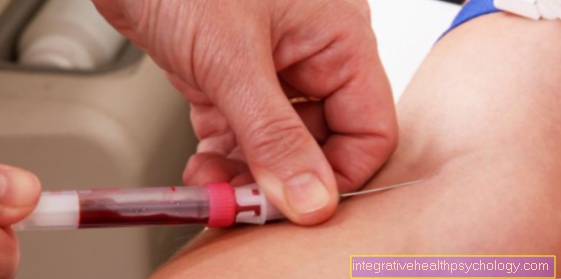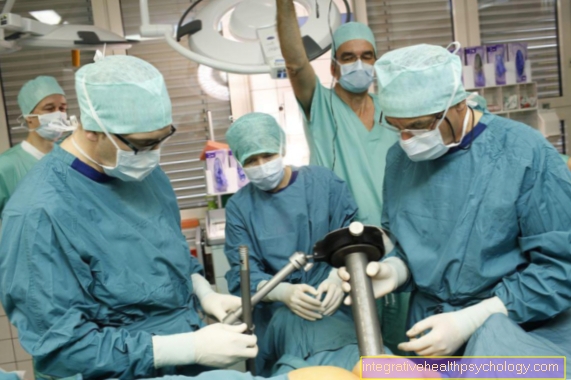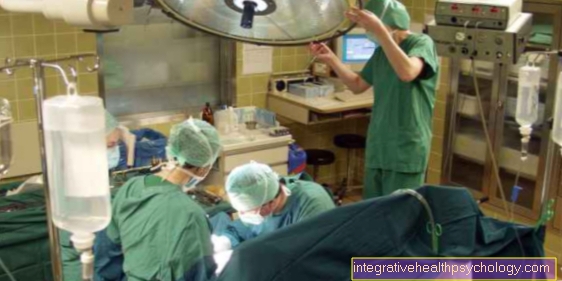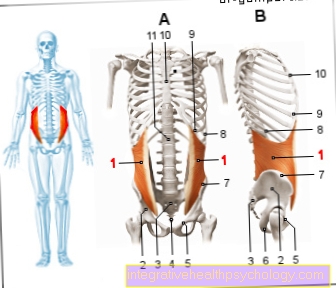OP on bow legs
introduction
O-legs describe a misalignment of the knees in which both knees deviate outwards. The name comes from the fact that the knees are reminiscent of an O’s image when viewed from the front. The deformity can be treated with an operation, which orthopedists are happy to consider as an alternative to conservative treatment using an orthosis.

Indication for surgery
Of course, there are good reasons to prefer knee surgery to conservative treatment. Such a reason for an operative correction of the leg axis is given if the patient has knee osteoarthritis in the initial stage due to the bow legs, which affects the inner joint portion.
Most of these patients have very significant deviation of the knee axes and also complain of pain. Failure to operate could result in complete wear and tear on the knees and a knee prosthesis would have to be installed. To prevent this from happening, it makes sense to have an operation on the bow legs in good time.
For general information on bow legs, see: If one
Procedure for the operation on bow legs
The operation is always carried out under general anesthesia. The aim of an operation is to correct the knee axes and to distribute the body weight evenly on both menisci.
The most frequently used surgical method is the so-called "Open Wedge" osteotomy. The inside of the shin is sawn in below the knee joint and spread in a wedge shape until the desired posture is achieved. Spreading takes place under regular radiological control. The resulting gap must be filled with bone material, depending on the size of the gap. The material is usually obtained from the iliac crest.
Then the bone or the gap must be fixed. This is done with an angle fixation plate that is screwed on directly below the knee joint. The fixation keeps the spread bone so strong that no further external fixation with an orthosis is necessary.
Another, but rarer, type of operation is the "closed wedge" osteotomy. In contrast to the first-mentioned method, a wedge-shaped bone portion is cut out of the outer tibial head and then fixed.
Risks of OP with bow legs
It should be emphasized that with the current state of the art, complications have become very rare.
From a purely theoretical point of view, it is possible that, contrary to expectations, bone healing does not occur or occurs insufficiently and the healing of the bones is inadequate. As a result, the bones are brittle and unstable and walking without crutches is not possible.
Only a new operation can fix this. Poor bone healing can also result in loss of correction.
Bone suppuration could also occur, but this has rarely happened so far. In addition, it is possible that small nerves or vessels may be injured during the operation. The disadvantage of bow-leg surgery is that relatively extensive aftercare is required.
It should also be noted that the operation cannot definitively cure or prevent knee osteoarthritis, but merely postpones its onset for a long time.
For this reason, the operation is no longer useful for patients over 70 years of age.
What other treatment options are there? Find out at: Therapy of bow legs
What follow-up treatment is necessary for bow legs?
The follow-up treatment begins with the patient having to practice physiotherapy or physiotherapy exercises. These last about six weeks and are carried out two to three times a week. Even after this time, physiotherapy exercises are useful.
Immediately after the operation, the patient is also given a bandage tied around the lower leg, which is removed again after one or two days. Otherwise the fixation by the metal plate is so stable that no further external fixation is necessary.
A walking aid, usually in the form of crutches, is essential for the first four to six weeks. During this time, the full body weight load is not possible. Since there is little or hardly any movement during this time, the risk of thrombosis is relatively increased. In many cases, thrombosis injection therapy is also carried out, which is intended to prevent blood vessels from becoming blocked by a blood clot.
After about six weeks, the walking aid can be taken off and the patient can put full weight on his leg. The metal plate is surgically removed after about a year.
Pain in bowlegs after surgery
Pain is to be expected immediately after the operation, but it can be treated well during the inpatient stay. While there is usually no more pain in the knees afterwards.
Theoretically, however, it is possible for patients to complain of persistent pain that can be traced back to the procedure, but not from the knees. It is based on a complicated neurological process in pain management, which can occur in all types of operations.
Do scars remain after the operation?
As is usual with all operations, the bow leg operation leaves scars on the knee and the inner lower leg. The scars are signs of successful wound healing and can be more or less pronounced. With successful healing, the scars can adapt to the surrounding skin over time and are hardly noticeable.
If the scar is very annoying, it is possible to correct the scars surgically or aesthetically without surgery.
Read on below: Scar Care - What You Should Know!
Duration of the operation on bow legs
The patient has to be treated as an inpatient for the operation, which means that a hospital stay of around three to four days must be planned. The stay is longer if there are complications.
After the operation, the patient must be equipped with walking aids for about a month. A year can pass before full recovery and permission to do sports again, as the metal splint can be removed after this time.
How long are you on sick leave after the operation?
Depending on the type of work, sick leave takes different lengths of time. Of course, it depends on how much the knee is needed for work.
For work that does not put strain on the knee, such as office work, the patient can go back to work after about six weeks. Heavy physical activities, such as manual trades, require a sick leave of around three months. Professional athletes can expect to be unable to work for about a year.
Cost of surgery for bow legs
Since the costs are usually covered by the statutory health insurance, the question is unnecessary for most patients.
The question of costs becomes interesting for those with private insurance. No general answer can be given here, as each customer has a completely individual service catalog with his insurance. In order to clarify the question of costs, the persons concerned should contact their insurance company.
Does the health insurance company pay for the bow-leg surgery?
As a rule, the statutory health insurance pays the costs for an operation. A medical indication is required for this. A medical indication is nothing more than that the doctor has prescribed a leg axis correction for you after you have consulted him. Since misalignment has been shown to cause later health damage, an indication is the rule.
If the correction is purely for aesthetic reasons, the patient must pay for it himself. In almost all cases, however, there is a medical need.
Recommendations from the editorial team
You might also be interested in:
- If one
- Therapy of bow legs
- Bow legs on the baby
- Knock knees
- Operation of knock knees





























